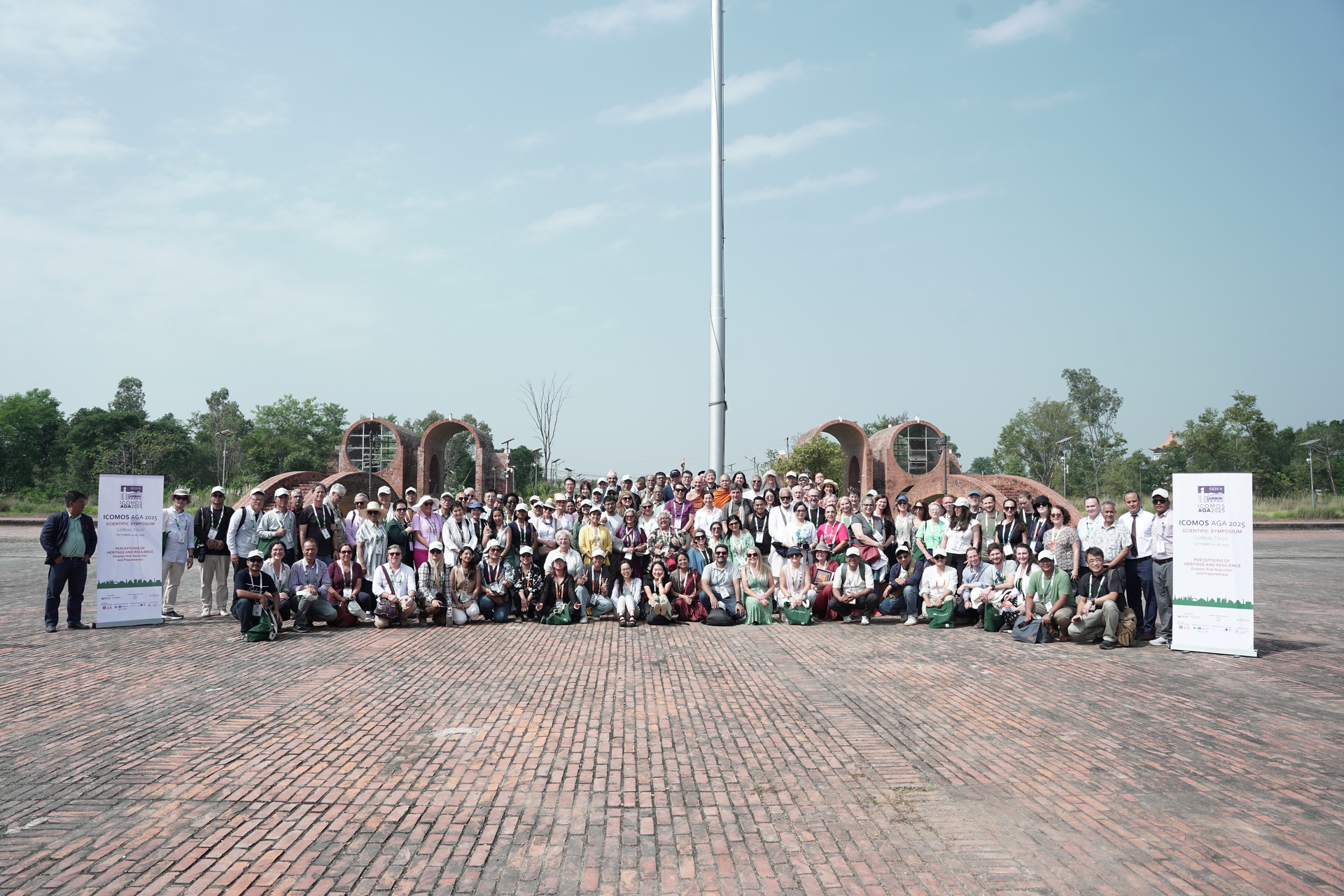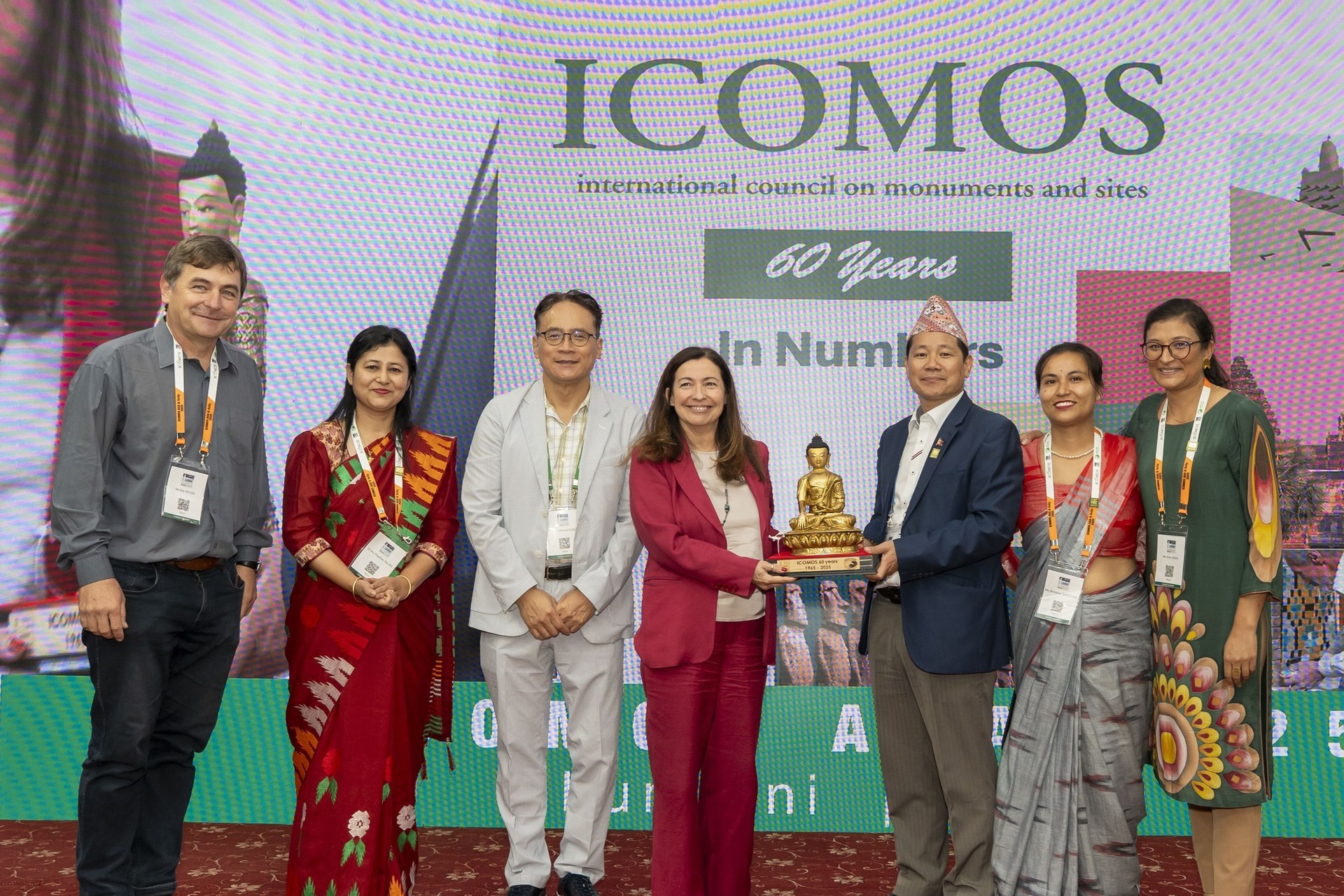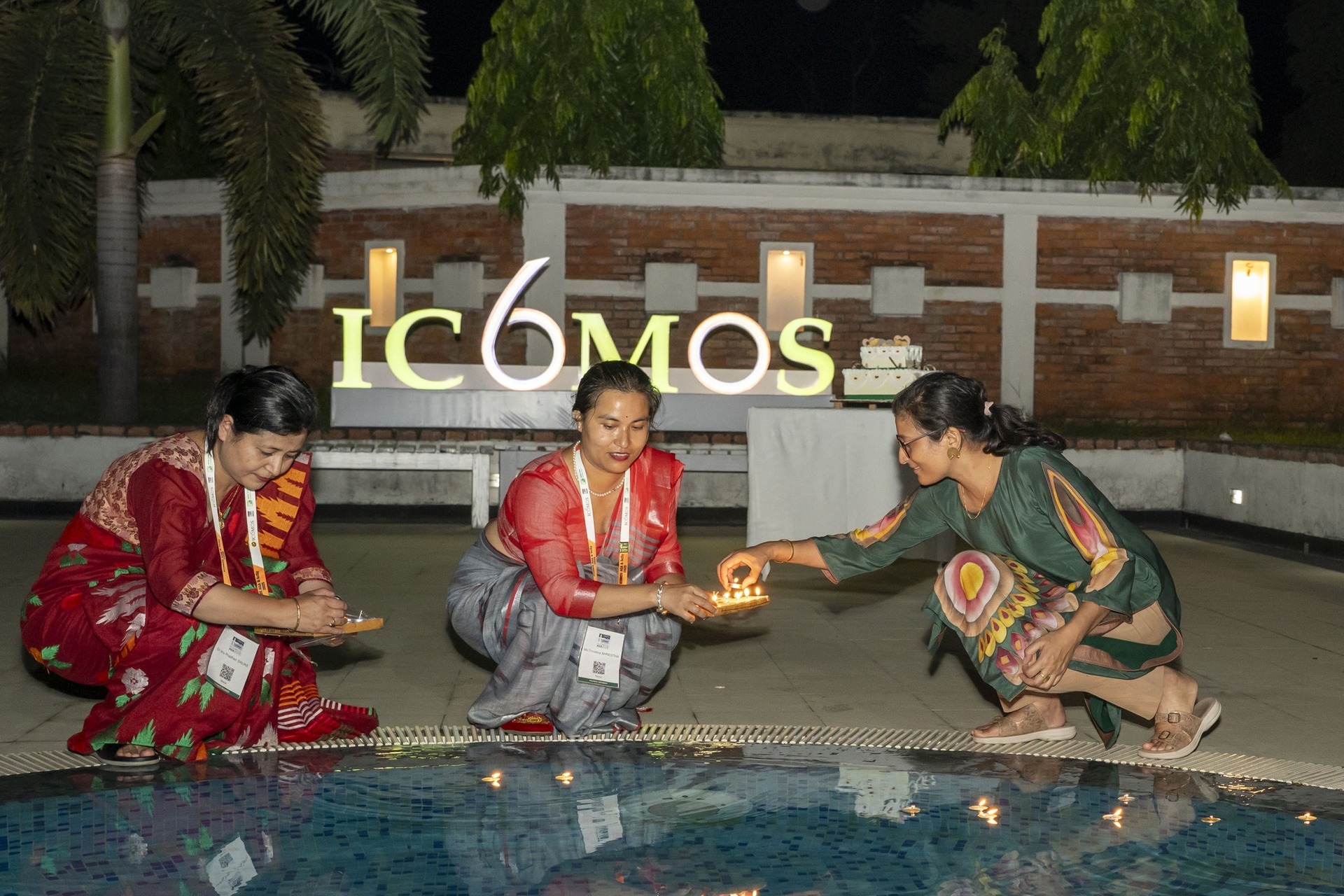A look back at the ICOMOS 2025 Annual General Assembly in Lumbini, Nepal

In 2025, the ICOMOS Annual General Assembly, Advisory Committee meetings, and Scientific Symposium were held in Lumbini, Nepal, from 11 to 19 October.
Lumbini, one of the most sacred places in the world for Buddhists, is traditionally recognized as the birthplace of Siddhartha Gautama, who later became the Buddha, around the 6th century BCE. According to ancient inscriptions, Queen Maya Devi gave birth to the Buddha while standing under a sal tree in the Lumbini Garden.
Today, Lumbini is a UNESCO World Heritage Site (inscribed in 1997) and an important pilgrimage destination attracting visitors from across the globe. The site includes the Maya Devi Temple, the ancient ruins of monastic complexes, and the Ashokan Pillar, erected by Emperor Ashoka in the 3rd century BCE to commemorate his visit. Its archaeological remains provide valuable insight into one of the world’s oldest spiritual traditions.
Lumbini’s universal significance lies not only in its historical and religious value but also in its enduring message of peace, compassion, and enlightenment—values that resonate strongly with this year’s Symposium theme, “Perceptions of Heritage and Resilience”.
60 YEARS OF ICOMOS
This year’s Assembly was particularly significant, as it marked the culmination of the celebrations for the 60th anniversary of ICOMOS. A special event was held on the evening of 14 October 2025, featuring a roundtable discussion reflecting on the past and future of ICOMOS, followed by a festive dinner. The session was opened by Kerime Danis, President of the Advisory Committee, with a presentation entitled “A Kaleidoscope of Past ICOMOS Activities,” offering a vivid overview of the organization’s six decades of achievements. During the roundtable, ICOMOS President Teresa Patricio and Honorary President Toshiyuki Kono addressed the current challenges faced by the organization. This was followed by reflections from the ICOMOS Vice Presidents from each region offering their perspectives and visions for the future, reaffirming ICOMOS’s continued commitment to heritage preservation and fostering international cooperation.
The General Assembly adopted 7 resolutions on Statutory matters, among which amendments to the ICOMOS Ethical Principles. The Ethical Principles, which guide the professional work of members, address conflicts of interest in projects, and outline members’ responsibilities toward cultural heritage, have been amended to introduce explicit language covering previously unaddressed issues, including respectful member-to-member conduct, recognition of cultural diversity, prohibition of discriminatory behaviour, respect regardless of gender, ethnicity, political affiliation or religion, and appropriate standards of behaviour towards ICOMOS staff.
SCIENTIFIC SYMPOSIUM ON PERCEPTIONS OF HERITAGE AND RESILIENCE
Disaster Risk Reduction and Preparedness
The theme of the Scientific Symposium bridged a longstanding discussion on perceptions of heritage: “The Sacred Garden of Lumbini – Perceptions of Buddha’s birthplace” with the focus on the recently adopted ICOMOS Triennial Scientific Plan 2024 – 2027 Disaster Resilient Heritage: Preparedness, Response and Recovery.
It explored these around three interconnected sub‑themes:
1. “Navigating and Negotiating Conflict,” focused on how heritage is both affected by and plays a role in the changing nature of armed conflict and hybrid warfare, including the weaponisation of cultural heritage and the necessity for updated strategies and tools.
2. “Withstanding the Forces of Nature for Conservation and Development of Heritage,” addressed how heritage sites can prepare for and respond to natural hazards and multiple‑hazard contexts, integrating tangible and intangible heritage, traditional knowledge, training and risk reduction.
3. “Leveraging Heritage for Peace,” recognised the unique setting of the AGA 2025 at Lumbini – the birthplace of the Buddha – and sought to explore how heritage can foster peace, non‑violence, compassion, social justice and inter‑species wellbeing, through panels, keynotes and collective deliberations rather than standard paper sessions.
The Symposium fostered strong intellectual engagement, bringing together almost 300 delegates from over 50 countries, with 241 submissions, 150 abstracts, and 3 thematic sessions.
Inspired by the setting of the Scientific Symposium, the President of ICOMOS Nepal Gyanin Rai delivered the following statement on Heritage and Peace at the close of the event in Lumbini Square. A detailed outcome document, reflecting all technical sessions, will be prepared and disseminated by the end of the year.
ICOMOS extends its deepest gratitude to ICOMOS Nepal, and in particular to Gyanin Rai, President of the National Committee, as well as to Anie Joshi, Secretary, and Kai Weise, Advisor, for their invaluable efforts in ensuring the success of this event.
ICOMOS also expresses its sincere appreciation to the institutions and organizations whose support, collaboration and commitment were essential to the success of the event. Special thanks are due to:
1. Main Symposium Partner
- Lumbini Buddhist University
2. National institutions
• Department of Archaeology, Government of Nepal
• Lumbini Development Trust
• Kathmandu Metropolitan City
• Lalitpur Metropolitan City
• Patan Museum3. International organisations
• Oriental Cultural Heritage Site Protection Alliance
• UNESCO
• Cultural Protection Fund, UK4. ICOMOS National Committees
• ICOMOS China
• ICOMOS Australia
• ICOMOS Malaysia
• ICOMOS Sweden5. Hotel and travel
• Lumbini Hotel Kasai
• Buddha Air

